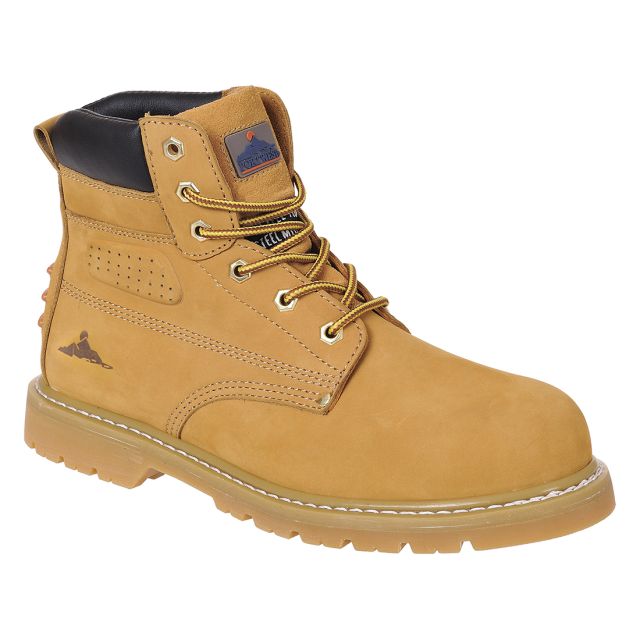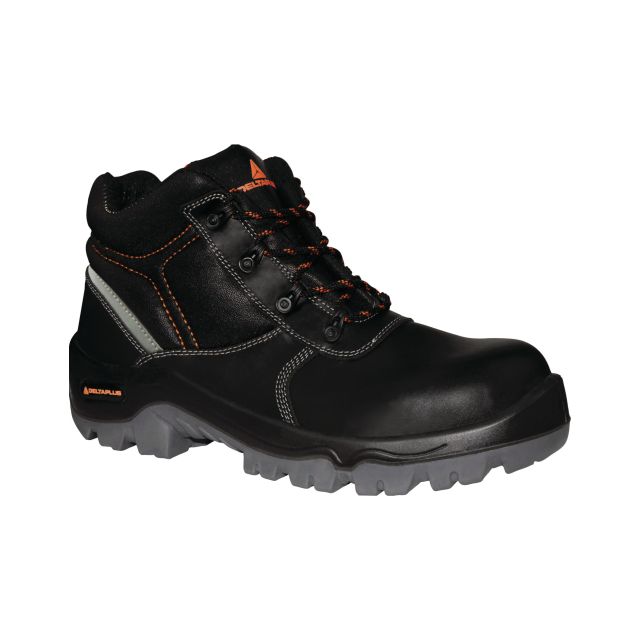Buying Safety Boots for Work: Considerations for Business Owners and Employees Alike
Having the correct safety boots for your workers is key for comfort and safety. If you buy the right boots for your workforce, they will be able to work at their best and safest - there is nothing worse than having foot discomfort all day.
Choosing Boot Styles
Each individual has a differently shaped foot, instep, foot arch, foot width, foot length and Gait. When buying safety boots, there is no one size fits all approach - just as you would not buy the same hard hat suspension for each person; it is recommended you have different options for individual wearers.
Let each person choose from designated styles - that are PPE footwear approved to EN ISO 20345:2011 standards - and if the boots are uncomfortable, you may need to purchase an additional pair in another style.
It may seem costly at first, but once each worker has found his or her safety footwear product, you will know from that point forward what to order.
Assessing the Risks
It is absolutely vital to assess workplace risks and decide what you need in your worker’s safety footwear. Once you have identified workplace hazards, consider what type of shoe is needed. Here are some common hazards you should consider:
- Slippery floors
- Dropping heavy or sharp objects onto feet
- Walking on hot surfaces
- The presence of acids, solvents, or oils
- The presence of sharp objects on the floor
- Electrical hazards
If your workplace carries any of these risks, you must protect your workers against them with the correct footwear.
5 Considerations for Safety Footwear
Here are 5 things you may not necessarily consider when buying safety boots for your work site.
Slip-Resistance
Slips and trips are the most common workplace accidents making up 29% of all non-fatal accidents at work in 2018/19. Make sure that any site safety boots have slip-resistant properties, and appropriate tread.
Anti-Slip standards to look out for are: SRA, SRB and SRC. More on those ratings and what they mean here.
Comfort
Even though your worker may find his or her favourite trainers more comfortable, if PPE footwear is deemed necessary, nobody should even be entering the work site without compliant safety footwear. A worker cannot legally sign a waiver to wear his or her own footwear; therefore, it is important to find a safety boot that fits the wearer comfortably.
For cold environments, fur lined (or faux fur) is an appreciated feature. Cold and Heat protection may even be primary concerns once you consider the risks of your workplace. You can learn about the applicable safety codes here.
Material
Make sure the materials of the shoe protect against the hazards you have identified. Shoes that are exposed to acids need a rubber compound and optional polymer toe cap, for example.
For many sites, you will need non-metallic safety components in the shoes for light or heavy wear - depending on your needs. Some shoes have anti-static properties and/or heat resistant outsoles. There are different shoe materials to choose from so make sure you know what you need for maximum safety. Again, once you have completed your risk assessment, you can find the relevant footwear safety codes to look out for here.
Use
When buying safety footwear, you want to consider how your workers will use the footwear. A rigger will need different safety footwear than an electrician or a construction worker.
Some workers will need waterproofing, steel toe caps, midsole anti-penetration inserts, and other safety considerations. You may be buying steel capped boots when all you need is non-slip waterproofing. Make sure each boot covers the needs you actually have.
Of course, it is usually better to be overprotected than under-protected, but make sure you are buying safety footwear that is fit for purpose.
Replacement
Despite the condition of footwear, replace work boots every 6-24 months, especially if there is to be lots of wear and tear. "Cost In Use" should be considered when buying new. For instance, a £30 pair of boots every 6 months would be more expensive than a £60 pair every 2 years.
Each month, have your workers check the tread, uppers, stitching and interior of their boots to see how well they are holding up; replace any defective footwear asap so as not to compromise safety.
Popular Safety Boots To Buy
As you are no doubt aware by now, XAMAX® is a registered safety supplier with BSiF (click to verify). As such, we only supply EN ISO 20345:2011 compliant safety footwear.
Here are a few of our most popular boots supplied to our construction and engineering customers.
Need safety boots, PPE or other workwear for your company? XAMAX® can offer advice on the safety issues that matter.
Is your company compliant to the latest PPE regulations? Find out here.
- How Long Does PPE Last? (Probably Not As Long As You Think) - 12th March 2025
- BSIF Issues Urgent Warning: 90% of PPE from Non-Registered Providers Fails Safety Tests (2025) - 10th February 2025
- Understanding UK Safety Standards for Respiratory Protection - 14th October 2024











